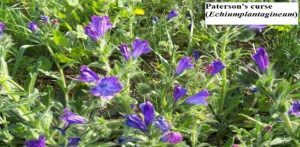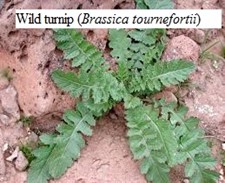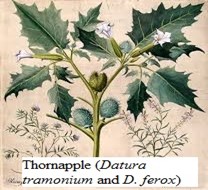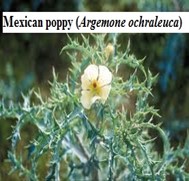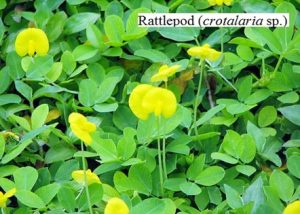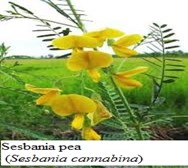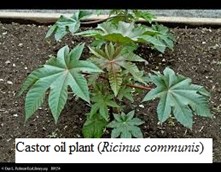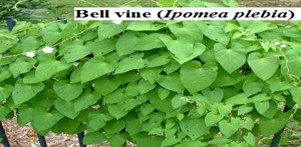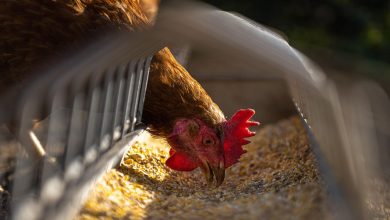Non-infectious Diseases of Poultry
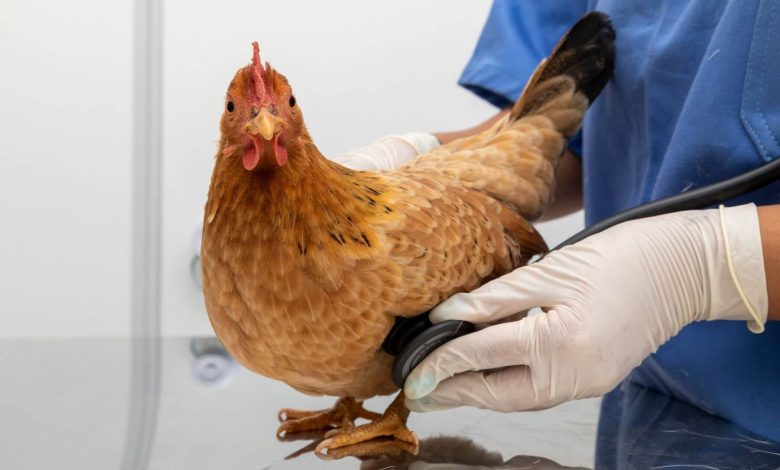
Dr.V.RAYALA REDDY M.V.Sc (Assistant Professor) (PS) Dept of Live Stock Farm Complex
Dr Matli Bhargavi MVSc, Ph.D (Assistant Professor) Dept of Veterinary Medicine
College of Veterinary Science, Proddutur, SVVU, Andhra Pradesh
“Disease” in poultry is usually thought of as being caused only by infectious agents. However, poultry can be affected by a wide range of diseases caused by non-infectious agents, ranging from cannibalism to nutritional disorders. While overcrowding and poor nutrition may cause non-infectious diseases in a poultry flock sometimes, only a single bird may suffer from a particular disorder, such as a prolapse.
Here discusses disorders of the egg tract, vices of chickens, nutritional disorders, and poisoning
DISORDERS OF THE EGG TRACT
During peak production, a hen can lay one egg every 23-26 hours. To make an egg, the yolk is shed into the oviduct; then, as the yolk travels down, the other parts are added. When the shell is complete, the egg is laid
- Egg-bound
A hen is described as egg-bound when an egg lodges in its oviduct and it cannot expel it. This can be caused either by a larger than normal egg, or when the muscles used in laying eggs are weak. The egg can be removed by inserting a lubricated finger into the cloaca and using the other hand to squeeze the egg out. If this fails, the egg should be broken with a sharp object and all the pieces of the shell removed. Holding the bird over a pan of hot water may relax the muscles of the oviduct and facilitate the removal of the egg. After the egg is removed, the bird should be allowed to recover in a separate coop to prevent other birds from pecking the cloaca. This can be done only in a small flock. In a large flock, an egg-bound bird should be culled. - Prolapse
When a hen lays an egg, the lower part of the oviduct is momentarily everted through the cloaca. Normally, the hen can retract the oviduct after laying. Prolapse occurs when the hen cannot retract the oviduct and a part of it remains outside the body. This condition is most common in overweight, older hens and in early laying pullets of low body weight. Other birds will peck at the red protrusion and cannibalism usually follows. It is unlikely that a bird with prolapse will recover and it should be destroyed. - Egg peritonitis
- The egg yolk provides a good medium for bacterial growth and may sometimes become infected while it is still inside the bird. Infection may occur while the yolk is moving down the egg tract or when a yolk fails to enter the oviduct and is shed into the body cavity. Prolific layers may die without warning, or may gradually become ill when affected by egg peritonitis. There is no viable commercial treatment for this disorder. However, valuable birds may be treated with antibiotics if the disease is diagnosed early.
VICES
(a) Cannibalism
It is a natural part of poultry behaviour for birds to establish a social hierarchy by pecking one another. Sometimes, an injured or weak bird or a stranger bird may be excessively attacked by all the other birds. A bird exhibiting a bleeding area is particularly likely to attract an attack. It may be pecked to death if it is not rescued. Such cannibalism is often aggravated by overcrowding. It is therefore important to provide adequate space to the flock. Nutritional deficiencies have also been implicated in cannibalism, along with boredom and irritation from external parasites. Lights that are too bright may make birds nervous or highlight a bleeding or red area, leading to more frequent pecking. Cannibalism may be prevented to some extent by providing birds with a distraction, such as a cabbage or carrot hung from the ceiling. If the problem becomes out of control, the only solution is de-beaking, which involves cutting off a part of the beak to prevent birds from causing injury to one another.
(b) Egg eating
Egg eating usually begins when birds eat already broken eggs. Once a few birds acquire the habit, it spreads rapidly through the flock. Factors which lead to egg breakage encourage egg eating, such as inadequate nesting facilities, failure to collect eggs frequently, insufficient nesting material and inadequate diet resulting in soft and thin shelled eggs. Correcting these problems will reduce the number of broken eggs. However, it is difficult to break the habit of birds and it is best to cull those that begin to eat eggs. De-beaking may be the last resort.
NUTRITIONAL DISORDERS
A well-balanced diet is essential for maximum growth, production and health of a poultry flock. The components of a diet are energy, protein, vitamins and minerals. They must be present in the correct proportions. Nutritional problems occur when the overall dietary amount is inadequate, or when the components of the diet are not balanced.
Feed is used by the bird first for maintenance (normal body functions) and second for growth and/or production (i.e. meat or eggs). An inadequate diet will lead to a decline in growth of young birds or a drop in egg production in laying hens. Dietary requirements vary with age, sex and laying status. For instance, a six-week-old chick requires 1% calcium and 20% protein whereas a layer requires 3.6% calcium and 16% protein.
(a) Protein
The protein component in a diet can come from an animal source, such as meat meal or fish meal, or a plant source, such as soybean meal. Dietary protein is used by the bird to build its own protein (muscle) and/or egg protein. A protein-deficient diet will lead to poor growth and low egg production
(c) Energy
The most common sources of energy in poultry diets are cereal grains, such as maize, wheat or sorghum, which are high energy foods. An energy-deficient diet will result in depressed production and a loss of condition. A diet excessively high in energy will cause birds to become fat and will reduce their feed intake. When feed intake decreases, birds may suffer from a deficiency of protein and vitamins, which complicates the problem.
(d) Vitamin deficiencies
Vitamins are required only in small amounts but are essential for growth and production. All good quality commercial feeds will contain the required amount of vitamins and this will be stated on the label. However, vitamins can be destroyed by the action of heat and water, and may break down during prolonged storage. Feed should, therefore, be stored in a cool, dry shed and bought in small amounts to avoid long storage. Soluble vitamin supplements are available, which can be added to the drinking water to correct deficiencies. Alternatively, food rich in a particular vitamin can be provided. In tropical climates, where birds tend to eat less, it may be necessary to increase the vitamin content of the diet.
(e) Minerals
A wide range of minerals are required by poultry. They are available in good quality commercial feeds. Calcium and phosphorus, in particular, must be supplied in balanced proportions. Young birds require a ratio of calcium to phosphorus of 1:1; however, laying birds require a ratio of 5:1. Commercial layer diets have calcium incorporated in the mix; otherwise, extra calcium can be supplied by using shell grit or limestone.
If young chickens are given layer feed, the high calcium content can reduce the growth rate and delay sexual maturity. A deficiency of calcium in the diet can also cause a reduction in the growth rate, as well as rickets in young chickens. In layers, it can cause fragile bones or thin-shelled eggs. A phosphorus deficiency can also cause rickets in chickens.
Table 1. Sources, functions and symptoms of deficiency of vitamins
| Vitamin | Source | Function | Symptoms of deficiency |
| Vitamin A | Green leaf material |
Vision, growth reproduction, maintenance of mucous membranes, growth of cartilage in bones. |
Young birds – Listlessness, ruffled plumage, pale combs, wattles, beaks and shanks. Pustules in nasal passage, mouth; lameness Adult birds – Decreased production and hatchability of eggs. Watery discharge from nostrils and eyes. Pustules in nasal passage and mouth. Emaciation and weakness. |
| Vitamin D | Synthesised by the bird by the action of light on the skin. Fish liver oils |
Necessary for absorption of calcium in the diet. General calcium metabolism and maintenance of bone structure. |
Young birds – Rickets (leg weakness), soft beaks and claws. Poor growth. Adult birds – Decreased production and hatchability of eggs. Soft-shelled eggs. Fragile bones. |
| Vitamin E | Cereals, vegetable oils |
A wide range of biological functions. |
Young birds – Poor coordination, unsteady gait “crazy chick disease” (rapid contraction and relaxation of head and leg muscles). Adult birds – Reduced hatchability of eggs. Degeneration of testes in males. |
| Vitamin K | Green leaf material |
Required for blood. | Young and adult birds – Increased bruising and bleeding. |
| Vitamin B1(Thiamine) | Cereal grains, soya bean meal |
A wide range of biological functions. |
Young and adult birds – Decreased appetite and weight loss. Leg weakness and muscle paralysis. “Stargazing” (head retracted and legs thrust forward). |
| Vitamin B2 (Riboflavin) |
Green plants, yeast eggs, milk |
Essential for growth and tissue repair. |
Young birds – Poor growth. Toes curled inwards, clubbed down. Adult birds – Decreased hatchability of eggs. |
POISONING
(a) Aflatoxins
Aflatoxins are poisons produced by certain strains of the fungus Aspergillus flavus. Tropical conditions are ideal for the growth of fungi and contamination of feed is fairly common. These poisons affect the liver and the immune response to some diseases, such as thrush and coccidiosis, may be reduced. Ducks, geese and turkeys are very susceptible. It is a very difficult condition to diagnose as there are no specific clinical symptoms to show the presence of the poisons. By providing fresh food daily and removing any uneaten food, the chance of this fungus growing is reduced.
(b) Salt
Salt poisoning, caused by common salt, is usually found in birds fed food scraps. The symptoms are increased drinking and diarrhoea. Salt poisoning usually affects young birds.
(c) Ammonia
The high humidity may cause high levels of ammonia to be present in poultry sheds. This is easily detected by smell and, if not removed, may lead to respiratory problems and sometimes, severe conjunctivitis (ammonia burn). If the litter in the shed is kept dry and clean and the shed is well ventilated, ammonia should not be a problem.
(d) Lead
Symptoms of lead poisoning are loss of appetite, drowsiness, paralysis, convulsions, diarrhoea and sudden death. Check the area for old paint products, motor oils, old batteries and buckshot.
(e) Plants
The seeds, fruit or leaves of some plants are poisonous at all times or at a specific stage of growth. Poisons can be found in some garden plants and weeds, including oleander (Nerium oleander) leaves, green potatoes, rhubarb leaves, white cedar (Melia azedarach) fruits, paddy’s lucerne (Sida rhombifolia) leaves and some fungi. Cases have been recorded of poultry being killed by poisonous seeds in purchased grain. A number of other plants present having no record of toxicity to poultry, have poisoned other stock and contain substances which may be harmful to poultry. An example is ironwood (Erythrophloeum chlorostachys). There is no evidence that this tree, which is common in areas, is toxic to poultry but it is toxic to other livestock and to humans in very small doses and young shoots might attract birds which have no other green pick.
A diagnosis of plant poisoning requires careful recording of symptoms, presentation of sick or freshly-dead birds, evidence that suspect plants or their fruits or seeds have been eaten and specimens of the suspect plants.
(f) Botulism (Limber neck)
Botulism is caused by the toxins (poisons) produced by the bacterium Clostridium botulinum, which may be found in animal carcasses, decaying plant matter, stagnant pools and spoiled food.
Fly-blown material is particularly toxic because the toxin is concentrated in the maggots. Birds affected by botulism show paralysis, loose feathers and extreme weakness. To control an outbreak, contact with possible sources of toxin should be eliminated. In particular, sick birds should be removed and all carcasses should be burned. Water fowl showing early symptoms may be treated by placing birds in clean, running water and feeding wet bran mash.
(g) Pesticides
When poultry are treated for parasites, care must be taken to follow exactly the dose and instructions on the container because improper treatment can be potentially harmful to birds. Some chemicals used for treatment may appear in the eggs or meat of the birds and may persist for some time. In such cases, a period must elapse after treatment before meat or eggs are consumed. This is the ‘withholding period’ which is indicated on the container and must be observed. Birds should not be killed for eating during this period and all eggs laid should
be discarded.
When poultry are allowed free range, particularly in an orchard, they may be exposed to a variety of pesticides, which are being used on the trees. Some of these pesticides are likely to be toxic to the birds or, even if not affecting the birds themselves, may be taken up and concentrated in the meat or eggs. If the content of a pesticide is high in the meat or eggs, their consumption is dangerous and as such, their sale is illegal. Usually, there is no information on the container of such pesticides about possible effects on poultry or necessary withholding periods. The only safe course is to prevent poultry from places where pesticides are used. Drift of pesticides to poultry must also be avoided.
Common poisonous plants to poultry
Sesbania pea (Sesbania cannabina)
Wild turnip (Brassica tournefortii)
Bell vine (Ipomea plebia)
Thornapple (Datura tramonium and D. ferox)
Paterson’s curse (Echium plantagineum)
Mexican poppy (Argemone ochraleuca)
Castor oil plant (Ricinus communis)
Rattlepod (crotalaria sp.)
